Our travels have taught us that food is culture and culture is food. That makes not only for yummy excursions but teaches us about a nation’s or society’s values, history, ecology, and practices along the way.
We loved exploring rich bounty of Ecuador. From the scrub highlands of the Andes to the tropical Amazonian jungle to the abundant coastal waters, the food offerings in the country are varied and even adventurous. As I recall the assortment of smells, sights, and flavors, it’s hard to know where to begin.
While we found the basic food bland, the condiments and sauces that came on the side offered various spicy (hot), savory, or sweet options. I was pleasantly surprised at the number of vegetarian and vegan choices. The freshness of all of the food was delightful and scrumptious.
Mercado de Agricultores
Let’s start at the Farmer’s Market, where Paola, our fabulous guide, took us on a Sunday morning. Simply put, it’s gorgeous. The colors and varieties of fruit are astounding. Pink bananas, yellow plantains, oranges, bright reddish-pink dragon fruits, green limes, purple blackberries, huge melons, sweet strawberries, and sour cherries… The list could go on for pages. Fresh, luscious, and healthy. Ahhhh.
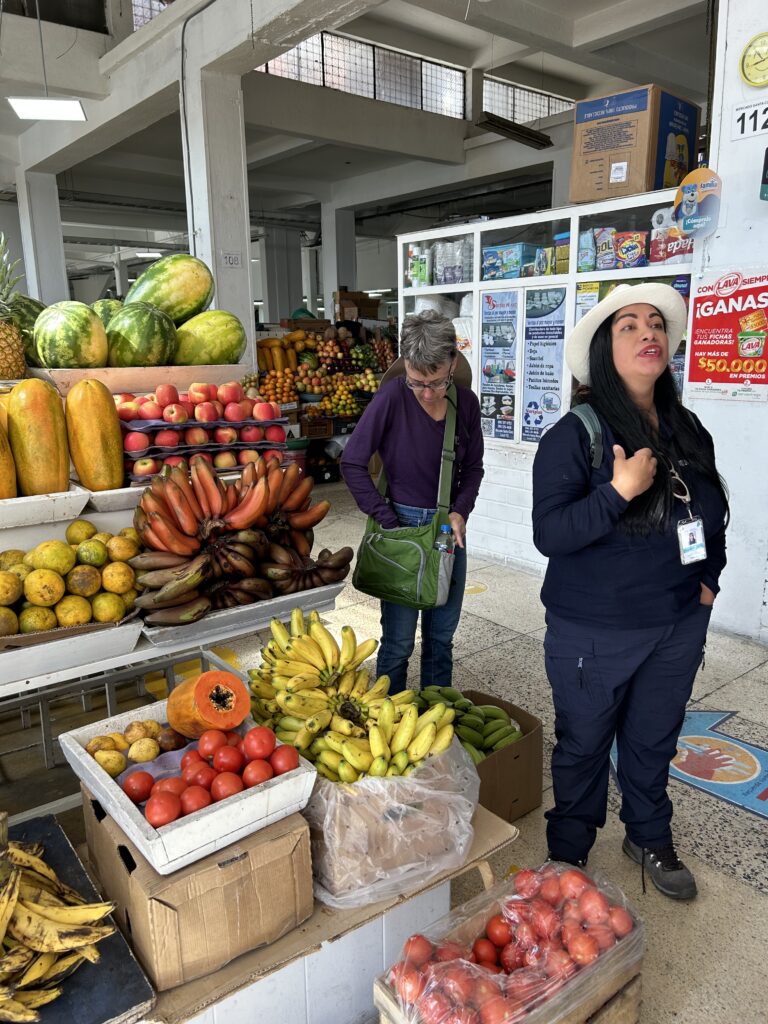
When you visit the farmers market in Ecuador to get potatoes, the seller will ask what you are making. Potato soup? You need a certain small, yellow potato. Fried potatoes? You need another kind. Ecuadorian farmers grow 400 varieties, so whatever you need, they have, and each one has its own specialty dish. So now I think we need to go spend 1.5 years in Ecuador, trying a different potato dish every day.

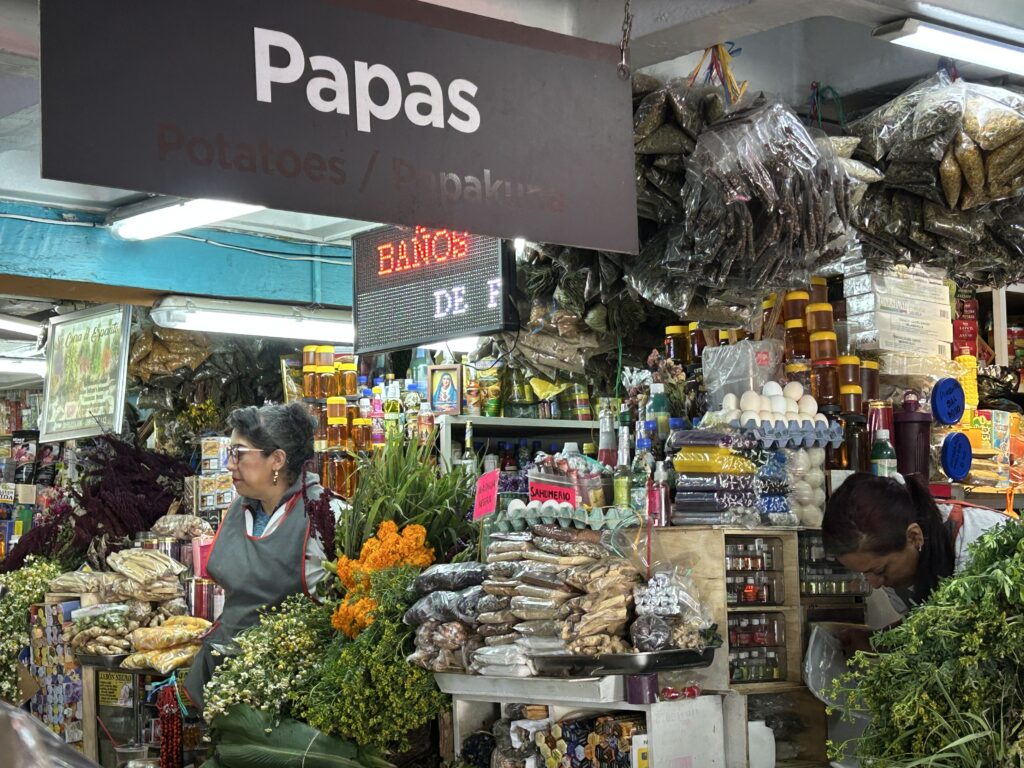
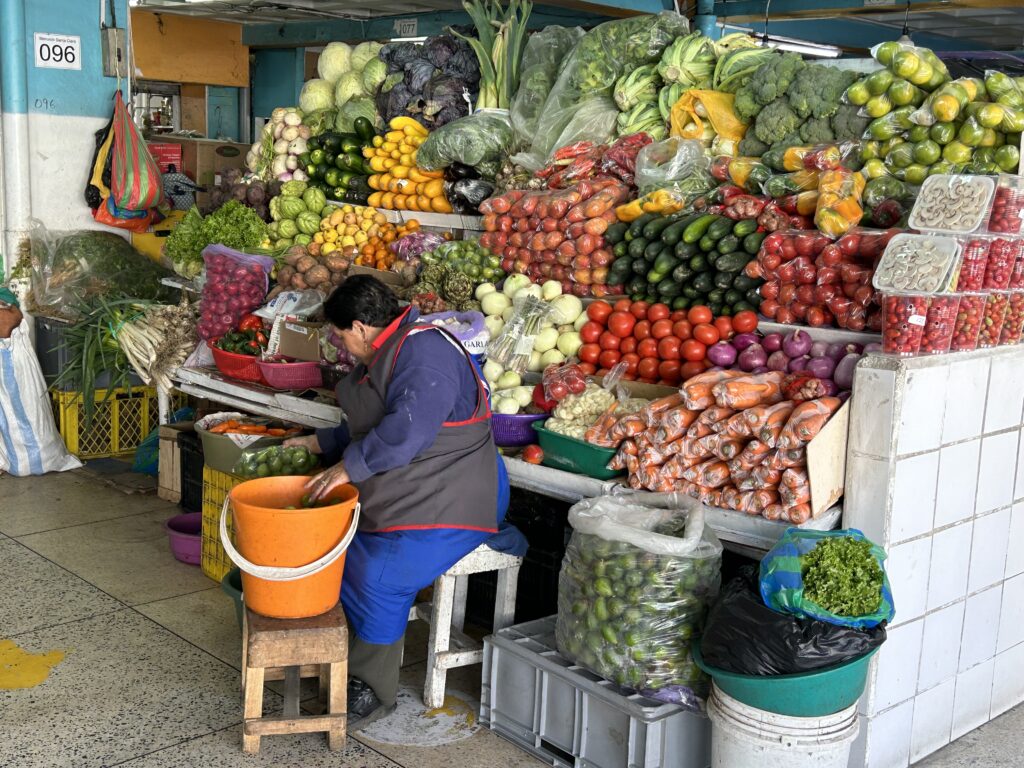
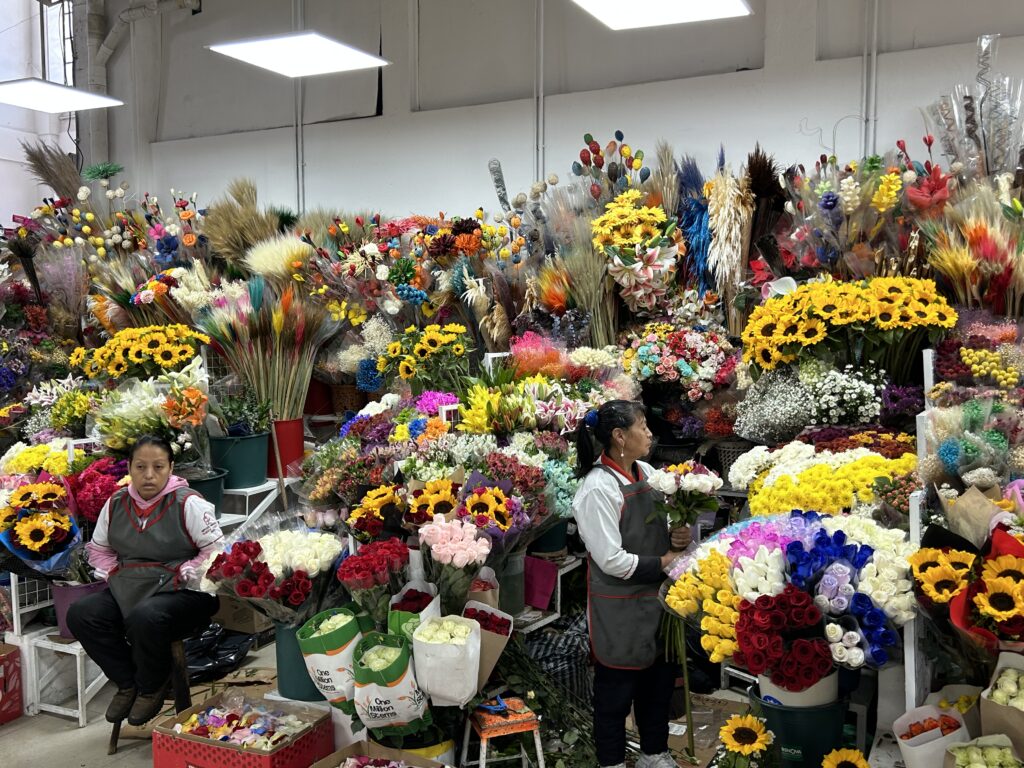
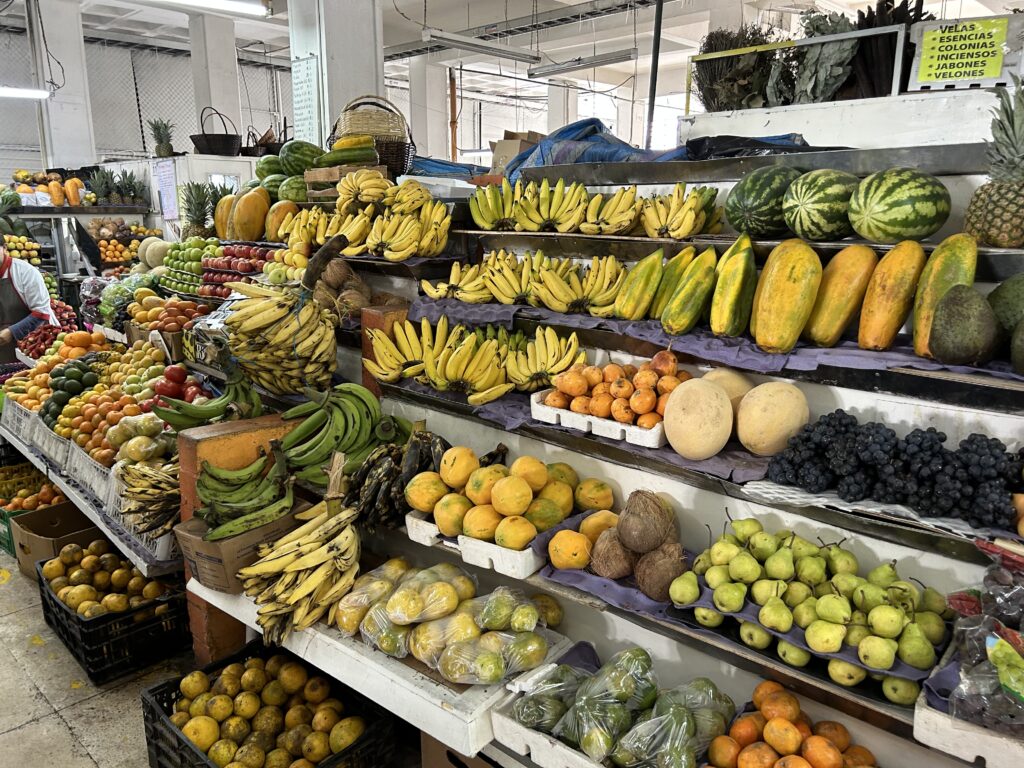

I love our Las Cruces Farmers Market, but it just can’t hold a candle to the variety – and prices! – of the market we visited in Quito. $1 for a stalk of bananas (that’s not a bunch, that’s 4 bunches), $3 for 15 passion fruit (slimy, yet satisfying). For $10 worth of fruits and veggies and $10 worth of meat and/or fish, you can easily feed a family of four for a week. I could live like that.
Pez
Regular readers of this blog probably know I’m a vegetarian. I do not consider myself a pescatarian but a vegetarian who eats fish on occasion, and that on that occasion, it must be fresh. Ecuador and the Galapagos provided those occasions in spades with scrumptious ceviche (including a lesson in making our own), fresh lobster, delicious grilled and “steamed in a banana leaf” trout (usually served whole and looking like it just came out of the water), and fabulous shrimp, one of Ecuador’s major exports. The ocean and the rivers provide a bounty, and we were happy to partake of the offerings.
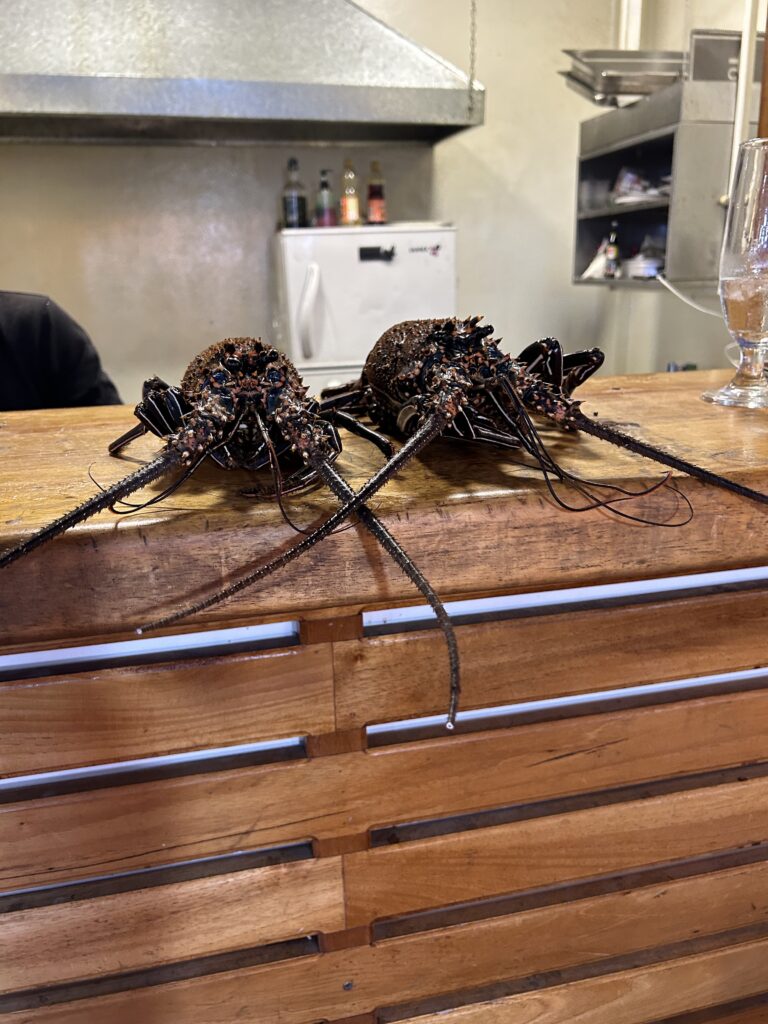
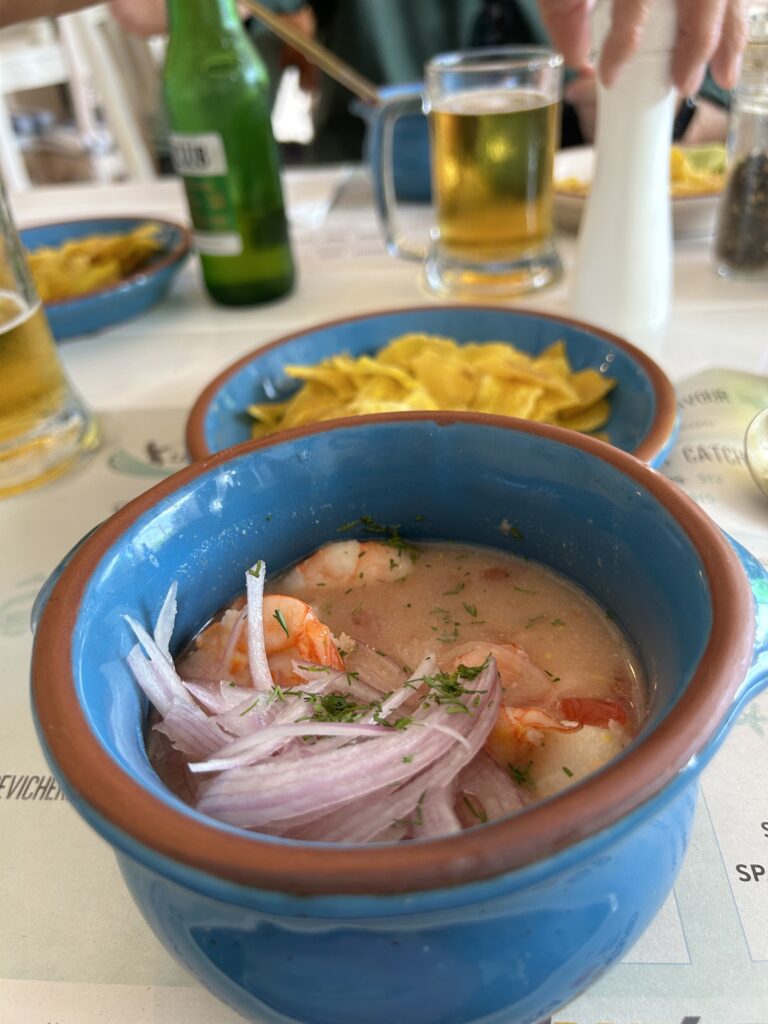
La Materia Prima (Staples)
Having spent time in other Latin American countries like Panamá, Costa Rica, and the Dominican Republic, we were surprised at the lack of beans. Rice is a staple, but Ecuadorians go in more for lentils than beans, at least in the areas we visited.
Another important staple of the diet is tostadas — not the corn chips we in New Mexico call tostadas, but toasted corn, somewhat akin to corn nuts, with less salt and slightly less tooth-breaking crunchiness. They are served with everything from potato soup to movie snacks (Ecuadorian popcorn).
Beef in Ecuador is abundant but not fabulous. Guide Paola explained that, unlike in Argentina, with its flat plains, Ecuadorian cattle spend a lot of time roaming the hills, making them lean instead of fat. (We also joked that their legs needed to be shorter on one side to help them stabilize on those steep inclines!) Pork was not a huge part of the diet (didn’t see it on a lot of restaurant menus). Like most Latin American countries, chickens roamed freely around town and countryside.


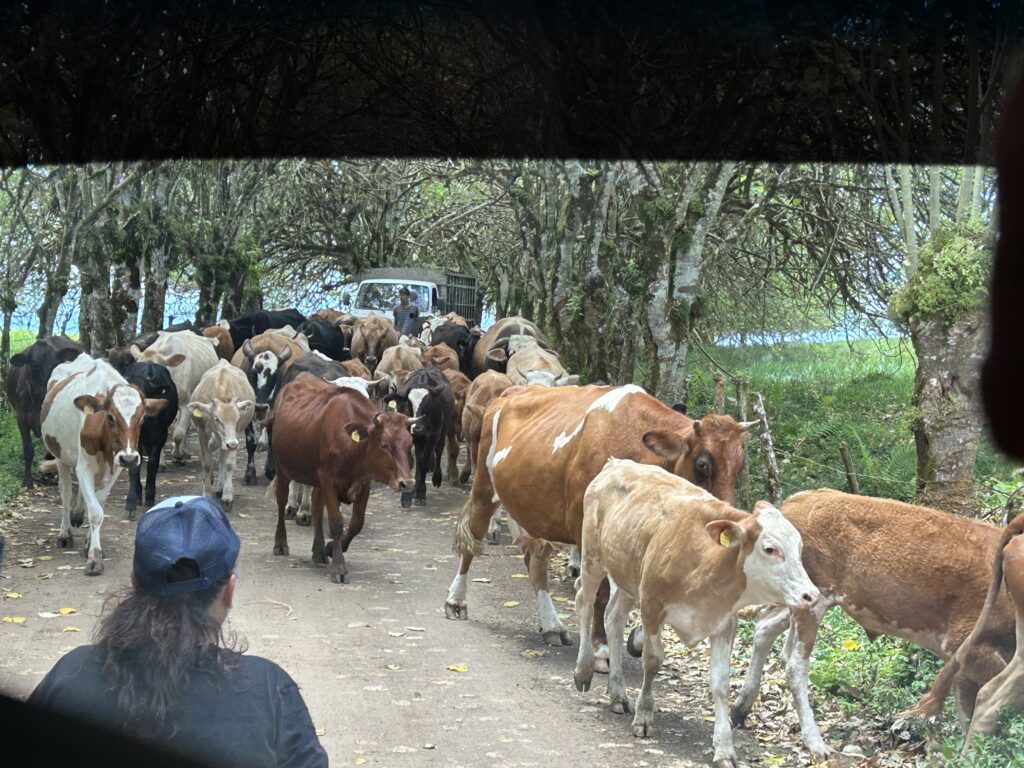
Aventuras de Comida
In one of our more experimental experiences, Jonna and Patty, another of our traveling companions, tried grilled beetle larvae. The eggs of this particular beetle are laid in the center of certain palms. When they hatch into larvae, they are gathered by the locals and grilled as a delicacy. Most of us on the tour weren’t brave enough to give them a try, but Jonna and Patty tried them for us. They declared them to be interesting, if not delicious, comparable to chicharrons in flavor but a little more chewy. (These are times when I’m happy to claim vegetarianism!)

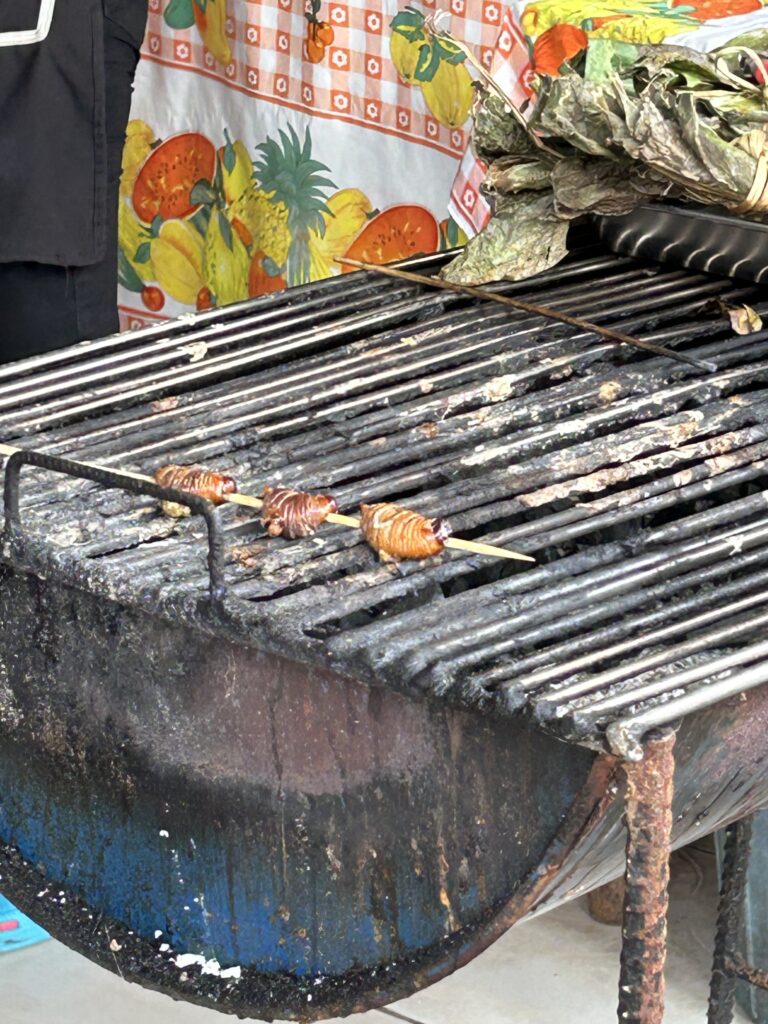
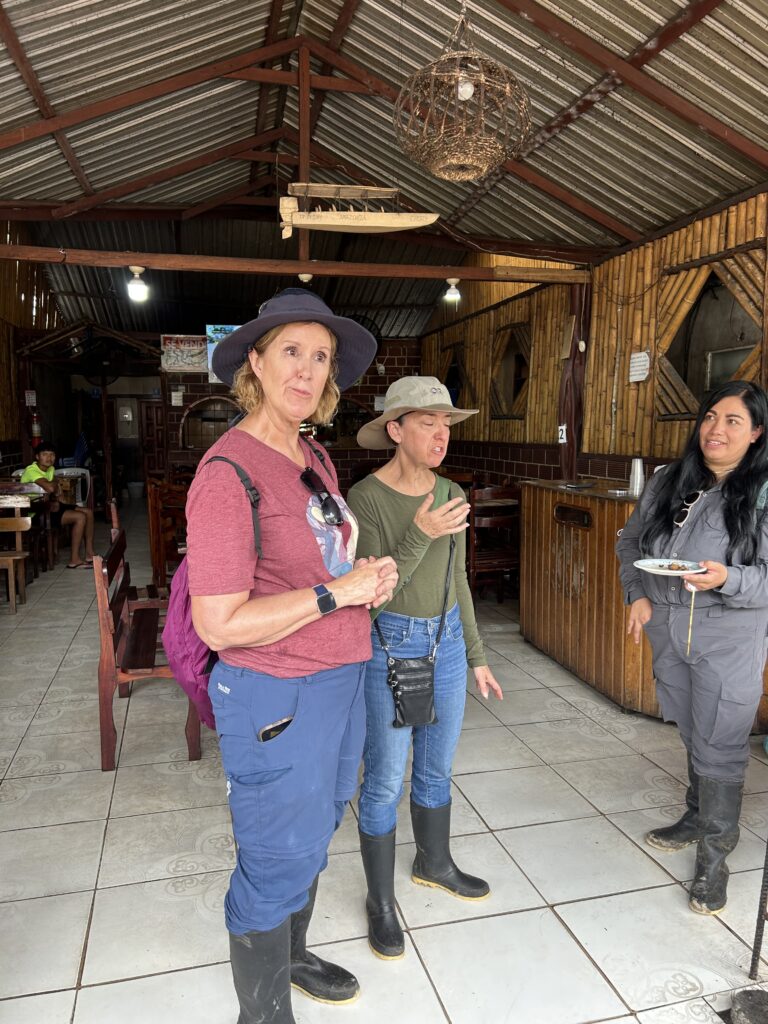
Ecuador is also famous for its culinary use of guinea pigs. One of our tour companions tried it and thought it was fine. I didn’t take any photos because, well, grilled guinea pig. You just can’t think of them as pets at that point, and, again, I’m happy to claim vegetarianism!
We also got to try a wide variety of fermented sugar cane. Some might call that rum, but it’s really more like moonshine, not the carefully crafted, beloved drink of the Caribbean. This photo of Patty and Beverly trying it infused with cinnamon — well, you’ll get the idea!
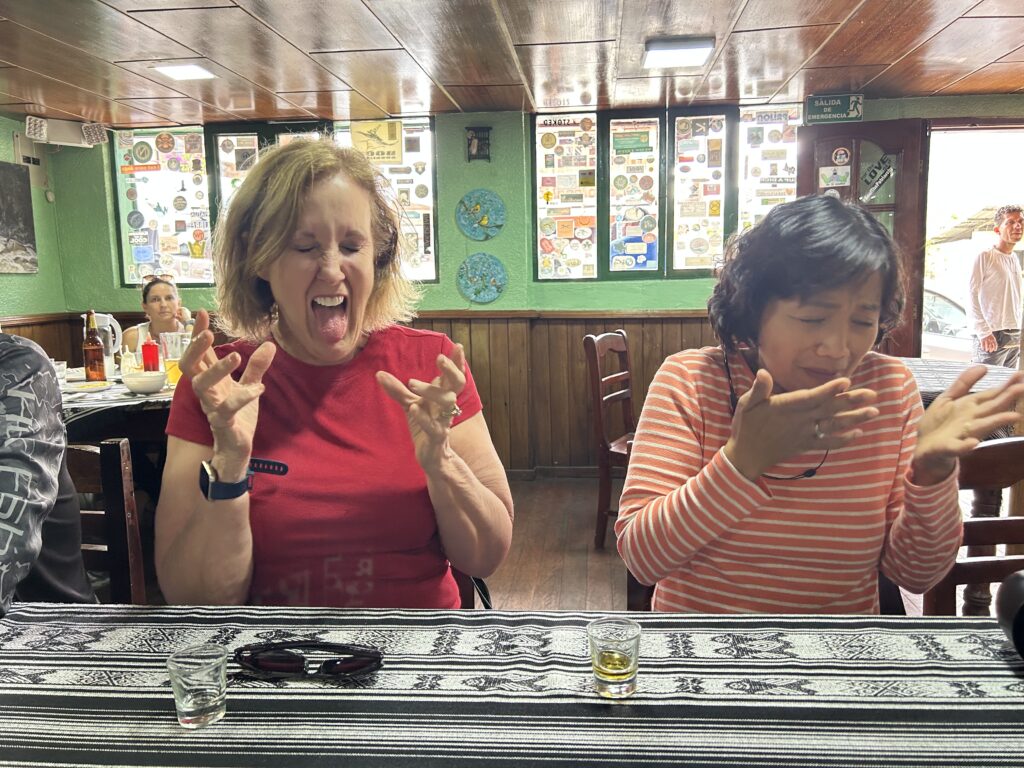
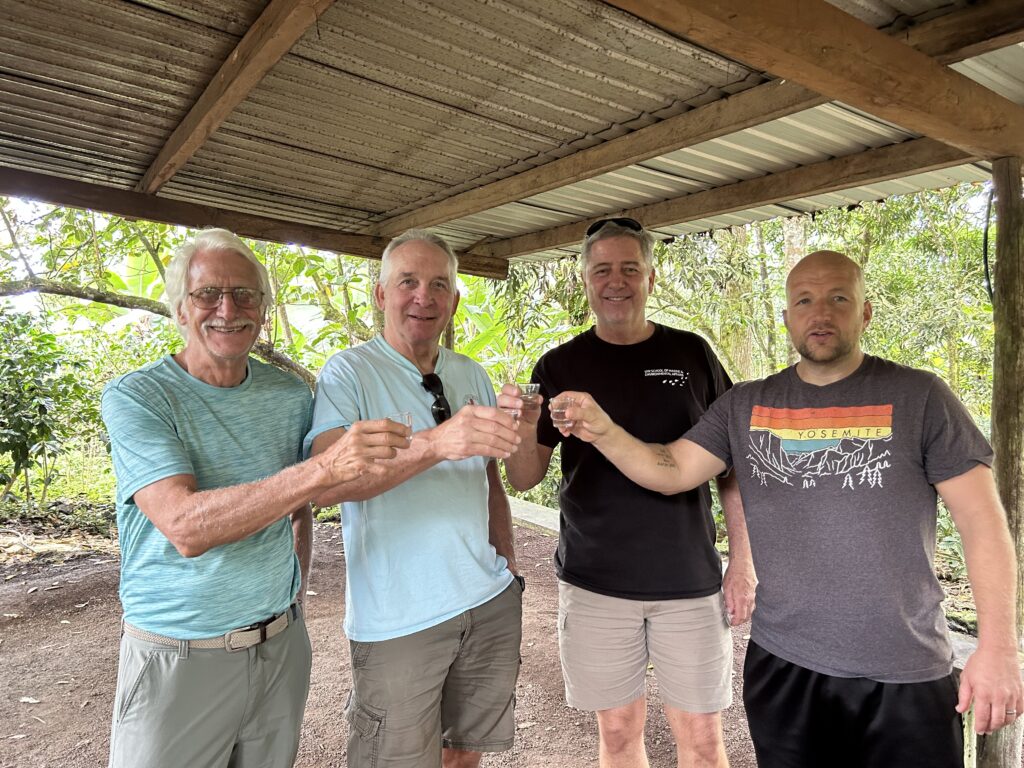
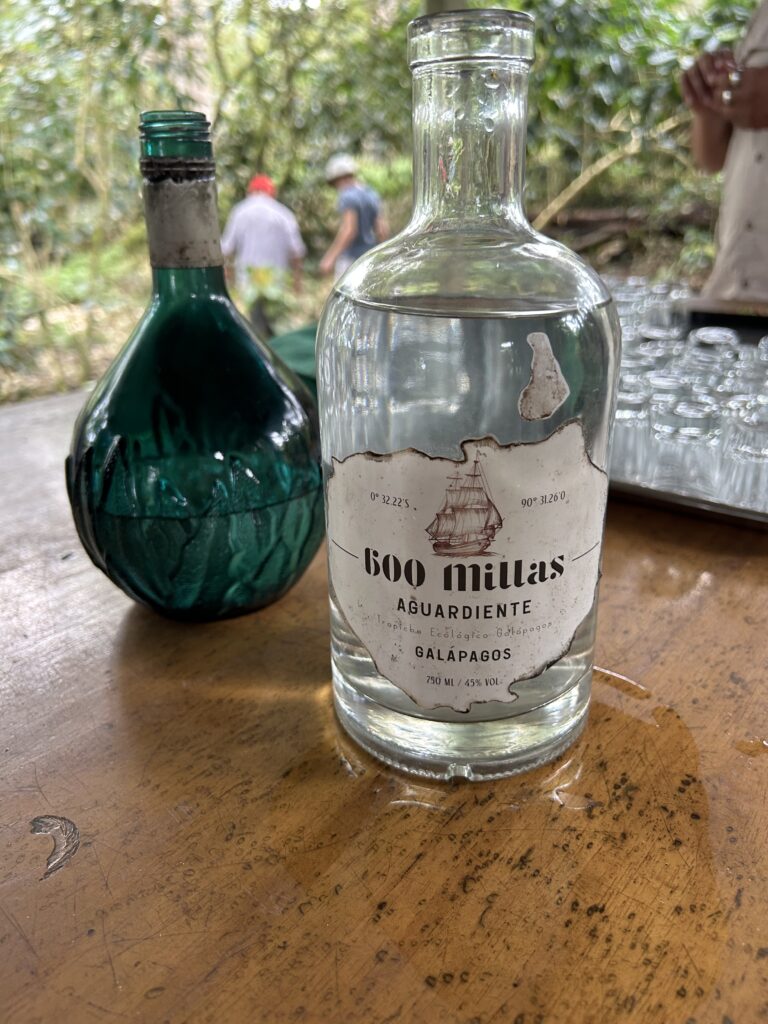
Chocolate
Like potatoes, chocolate is native to Ecuador, and the Ecuadorians know how to do it right! Did you know that the world-famous German, Belgian, and Dutch chocolate companies get their chocolate from Ecuador? Even the 100 percent chocolate in Ecuador in sweet because, rather than large plantations, the cacao is grown near mangos, bananas, and other fruit trees. The cross pollination makes the final product not the least bit bitter, as so much raw chocolate can be.

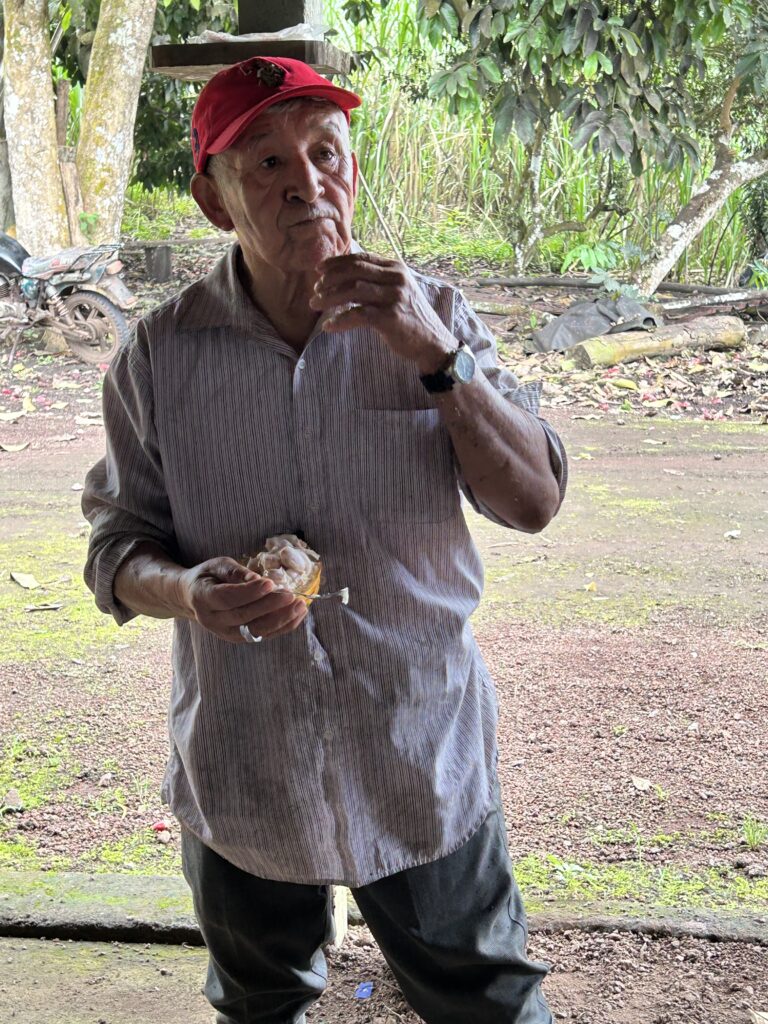
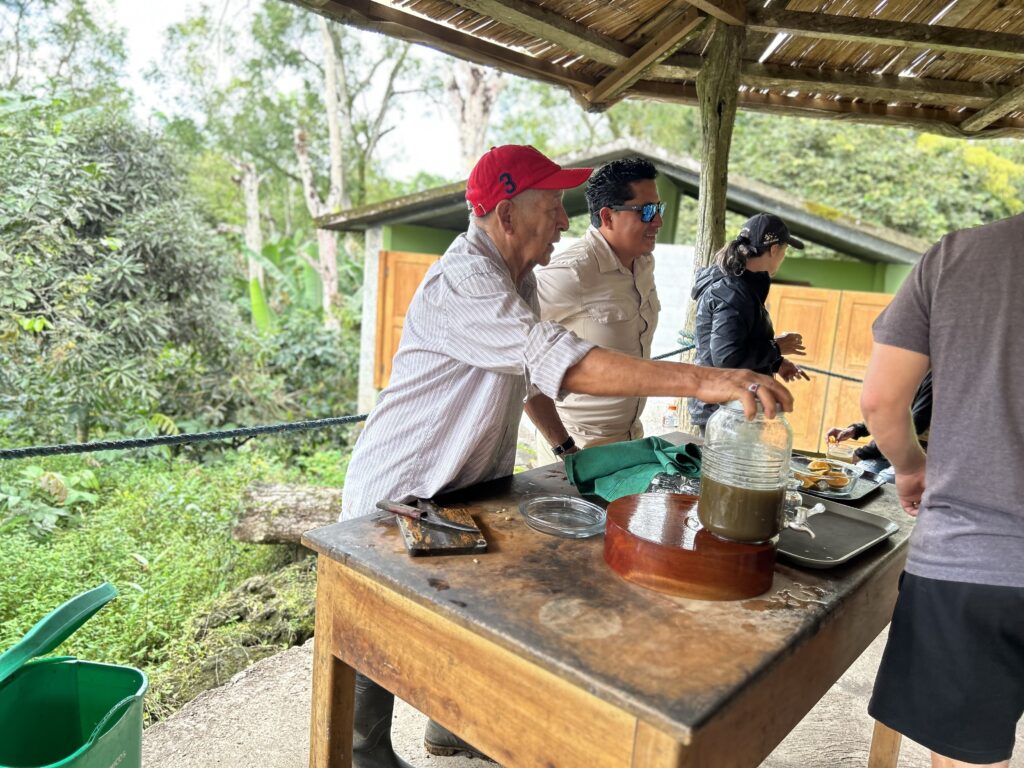
We visited chocolate producers in Quito and in the Galapagos, who walked us through the process from harvest, fermentation, roasting, and making products. Delicioso!
Gritamos a Unos Restaurantes Buenísimos (Shout Out to Some Great Restaurants)
As crazy at it may sound to American ears, the restaurant at the Holiday Inn near the airport was terrific. The Ecuadorian-based menu included traditional soups, ceviche, a tasty quinoa salad, and much more. The prices were reasonable. The drinks were carefully crafted, and the service friendly and attentive.

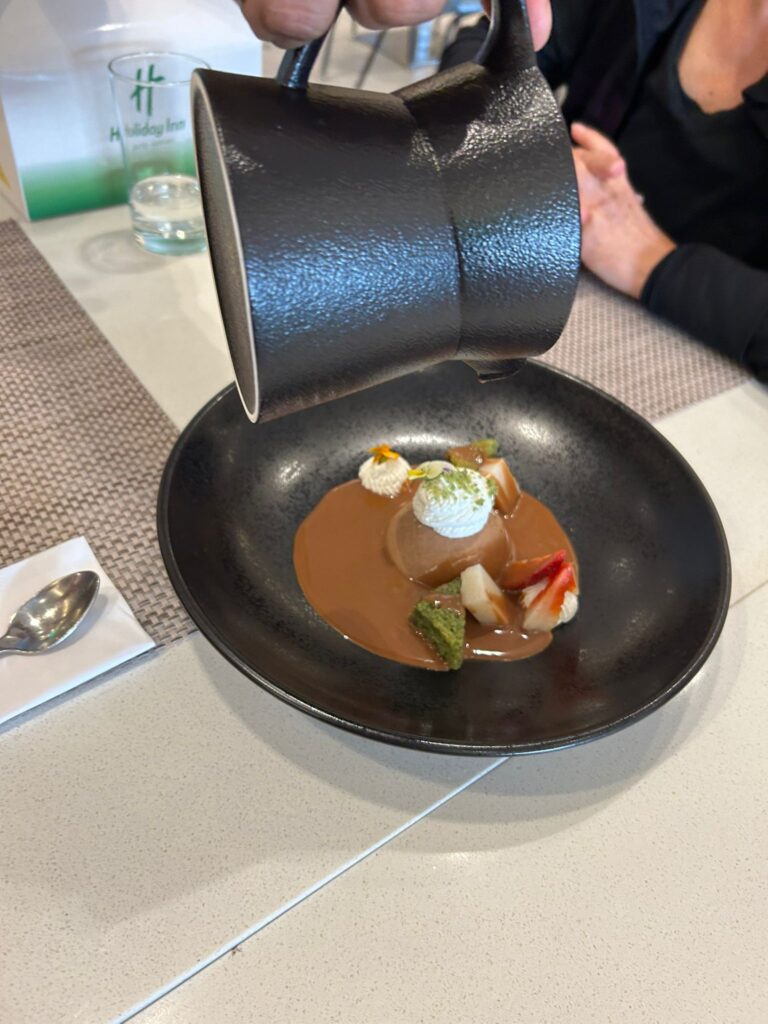
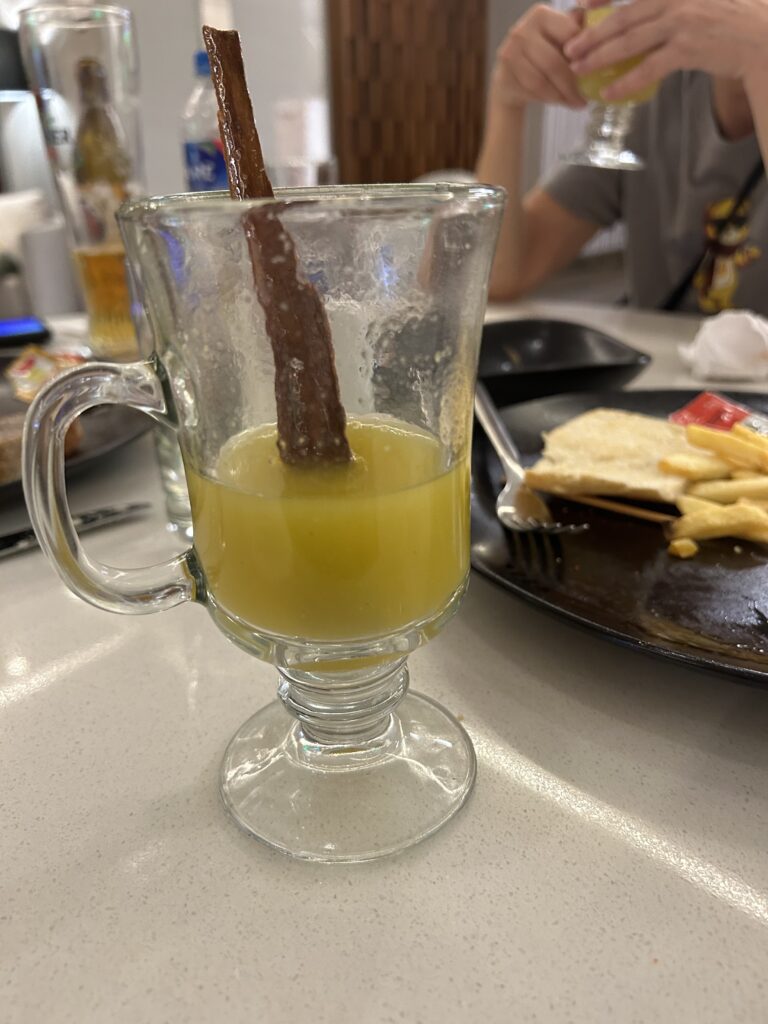

In the Galapagos, we ate twice off the main drag of Charles Darwin Avenue, which is full of restaurants that are good and interesting but not necessarily fascinating, fabulous, or inexpensive. The first off-Dawin restaurant was Sol y Luna on Charles Binford Avenue, where we had our fabulous grilled lobster dinner mentioned in the previous blog. The next day, the same chef, David, taught us how to make ceviche as part of our tour. How many times can I say delicious in one blog?
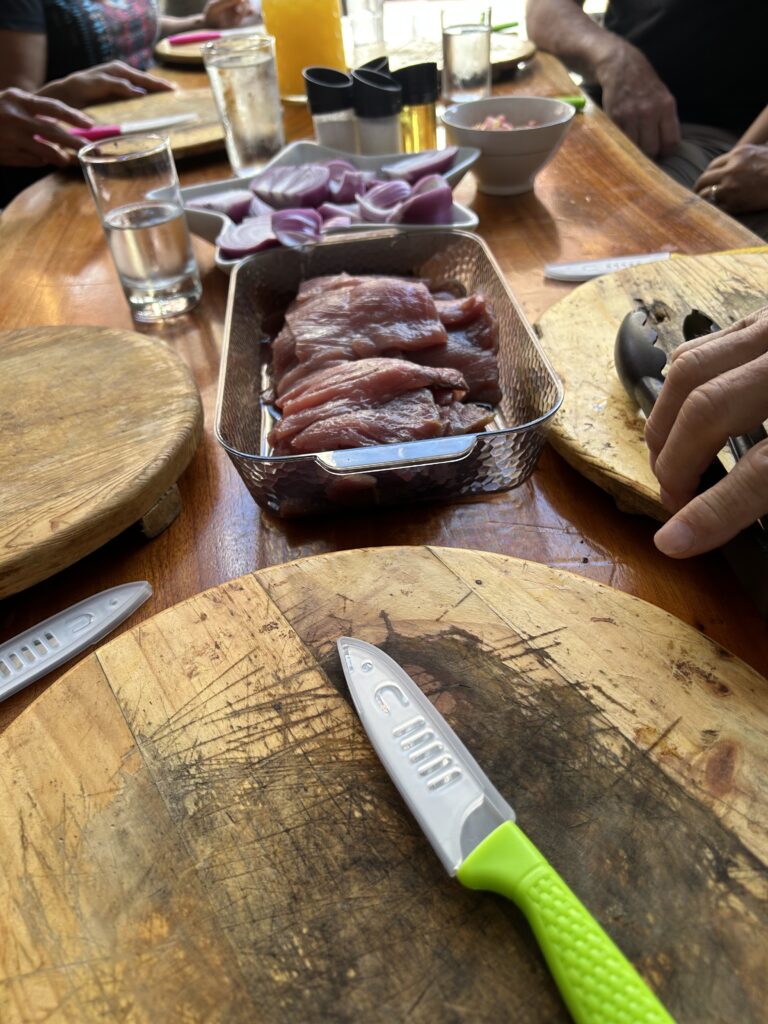
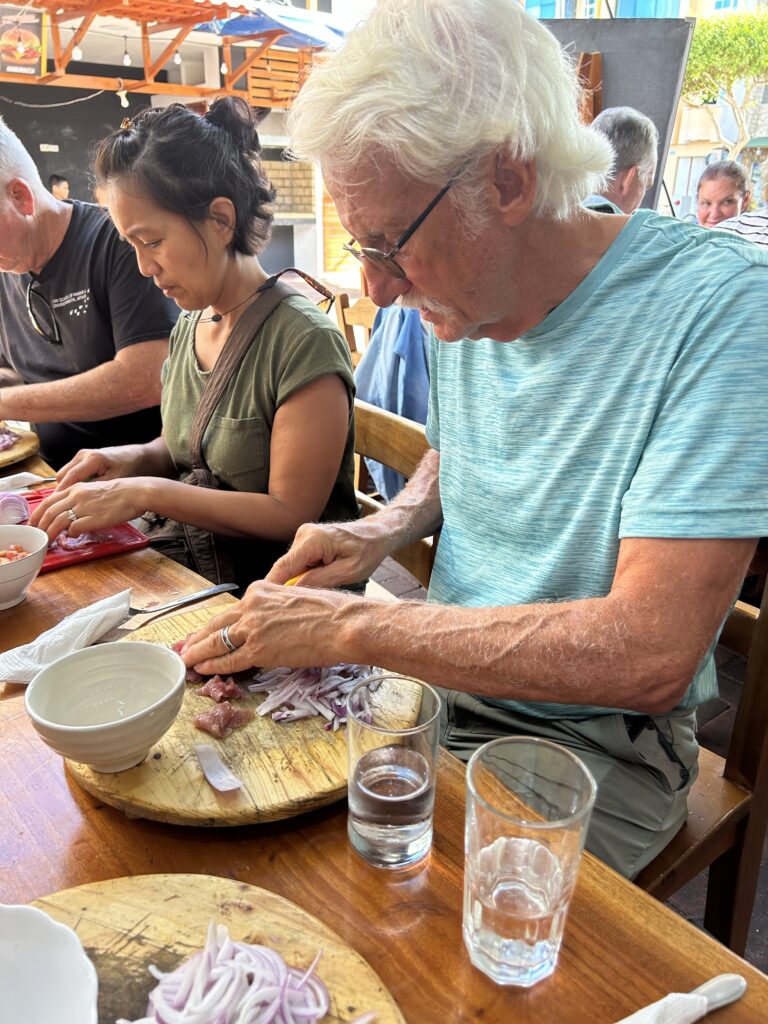
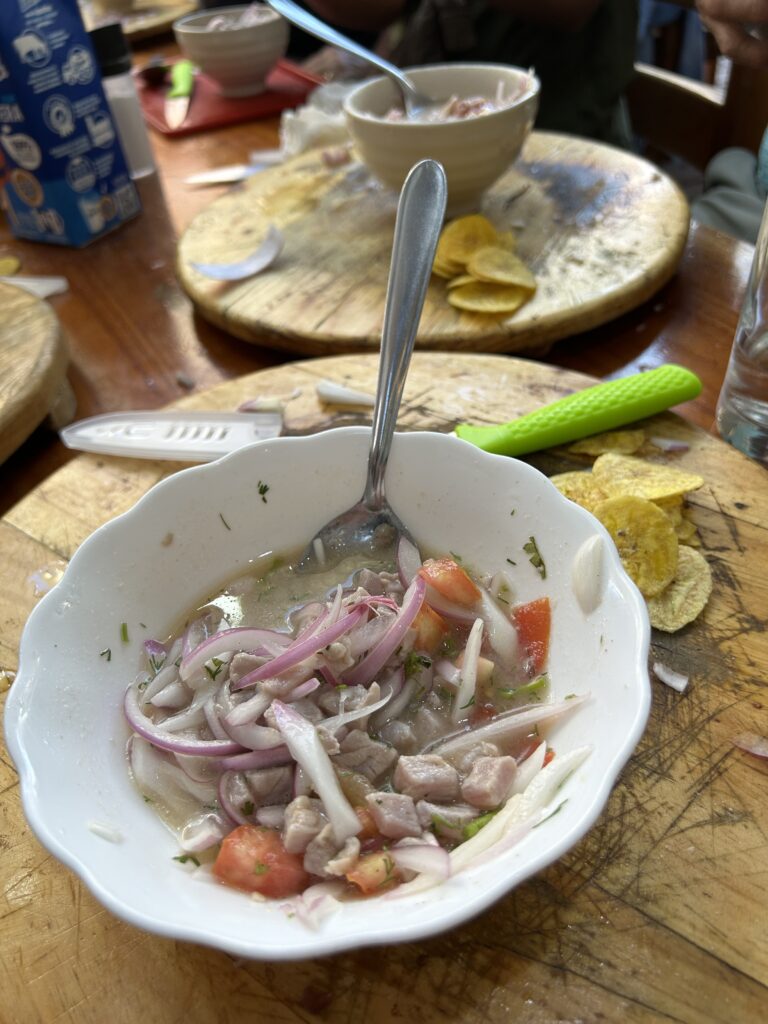
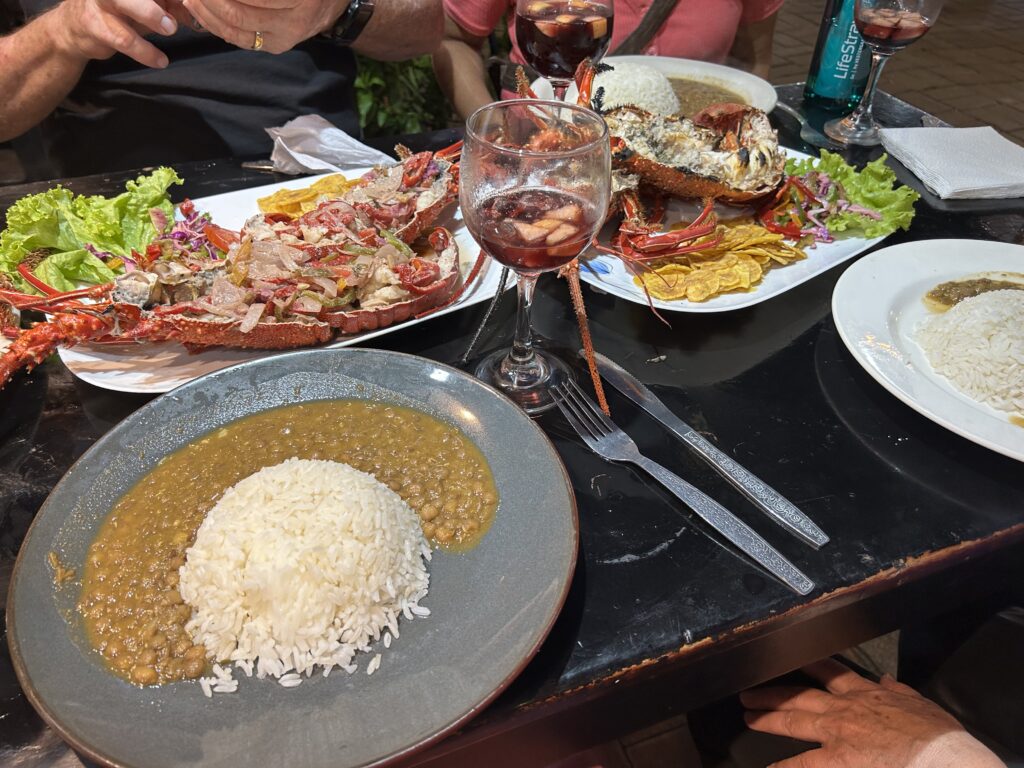
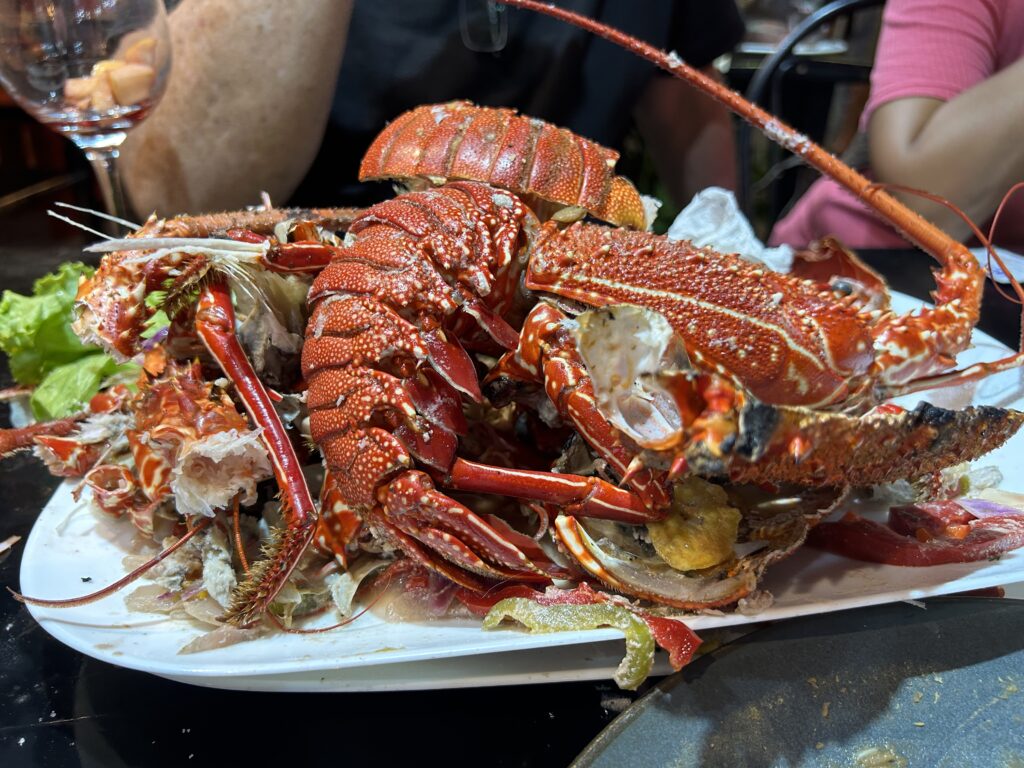
Another great place, found by a couple on our tour who are vegan and vegetarian, was Agave Food Studio in Puerto Ayora. The young chef had a creative menu that included a vegan ceviche and the best homemade corn tortillas I’ve ever had. He said he purchased the corn from the Galapagos highlands and processed it himself. That kind of commitment makes for enjoyable meals and makes those partaking feel good for supporting locals farmers and vendors.
El Guabo in Tababela, a suburb of Quito, is a family-owned and operated place with traditional Ecuadorian food as well as creative vegetarian and plant-based options. Our tour group had a celebration for our last night in the country, and the restaurant took great care of us. Not only was the food delectable and affordable, but the service was responsive and considerate. In the end, our waitress brought everyone a final shot of coconut-flavored fermented sugar cane, and we toasted a wonderful trip full of culinary delights.


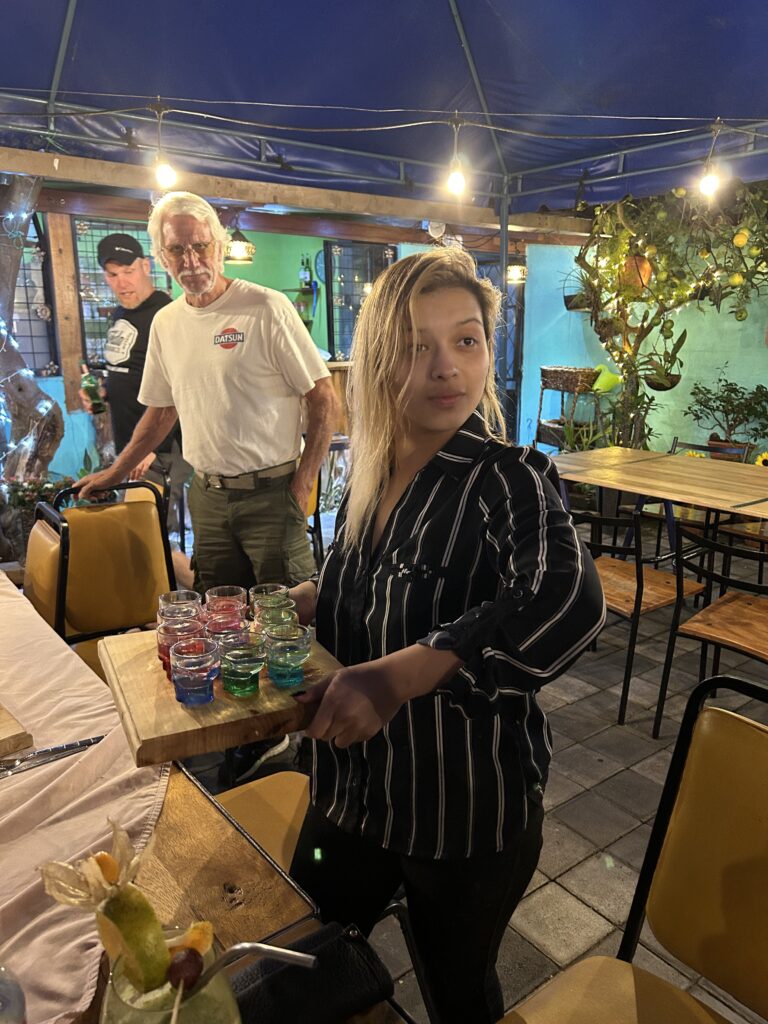
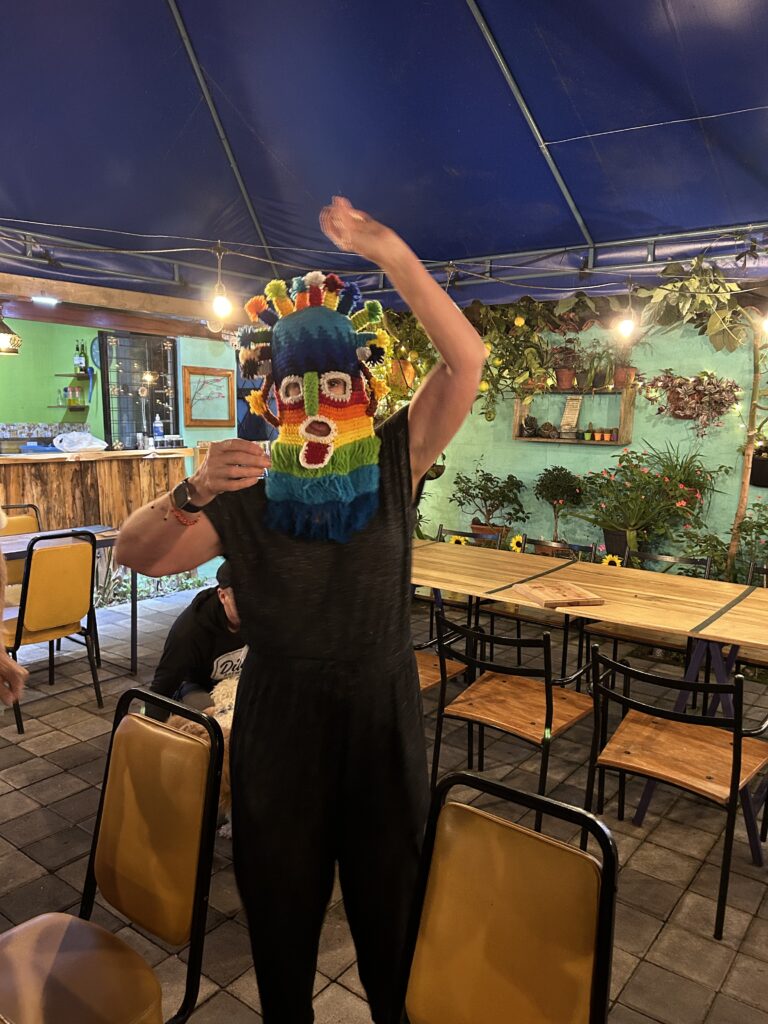

Finalamente
Because we were there for Day of the Dead, we were able to try the celebratory Colada Morada drink and “Guagua” bread. The deep purple Colada Morada is stewed fruit, including blackberries, which give it the color. Served warm, it’s thick, rich, delicious, and probably not to be had too often as it’s really filling. The “Guagua” bread (pronounced waa-waa, as in a crying baby) is in the shape of a swaddled baby, frosted, and sometimes filled with jelly or chocolate. Served with Colada Morada, they represent the blood and body and are a way of honoring the dead. The Day of the Dead is a more somber occasion in Ecuador than in some Latin American countries, but the restaurants and bakeries go all out with this specialty bread and drink.

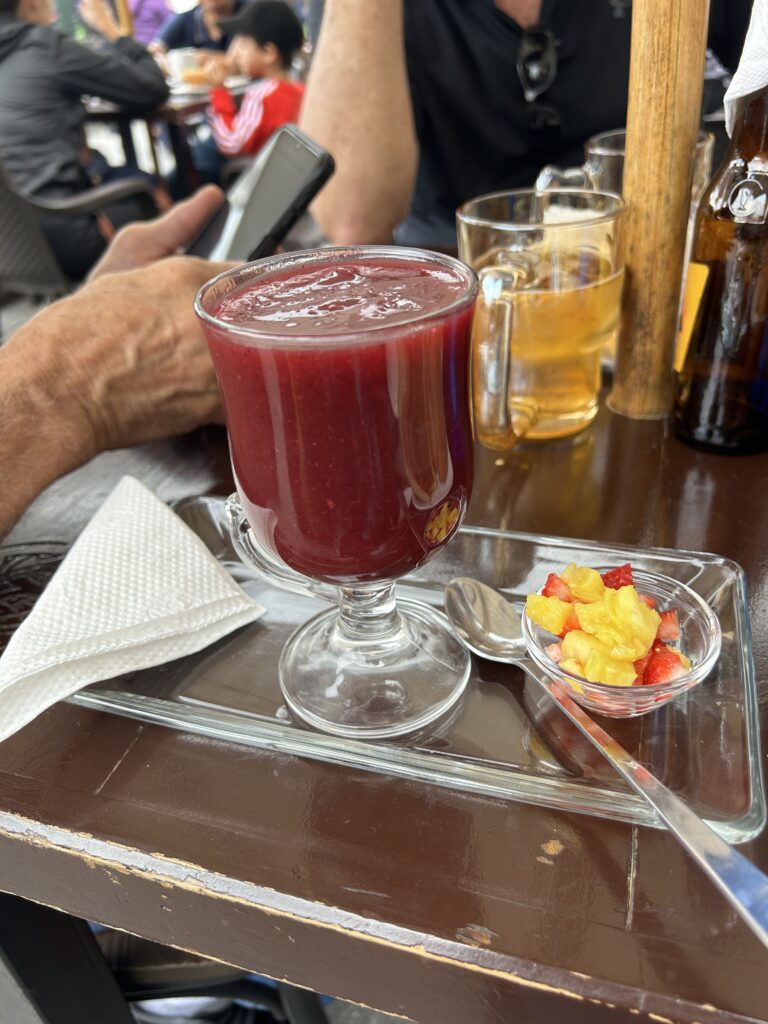
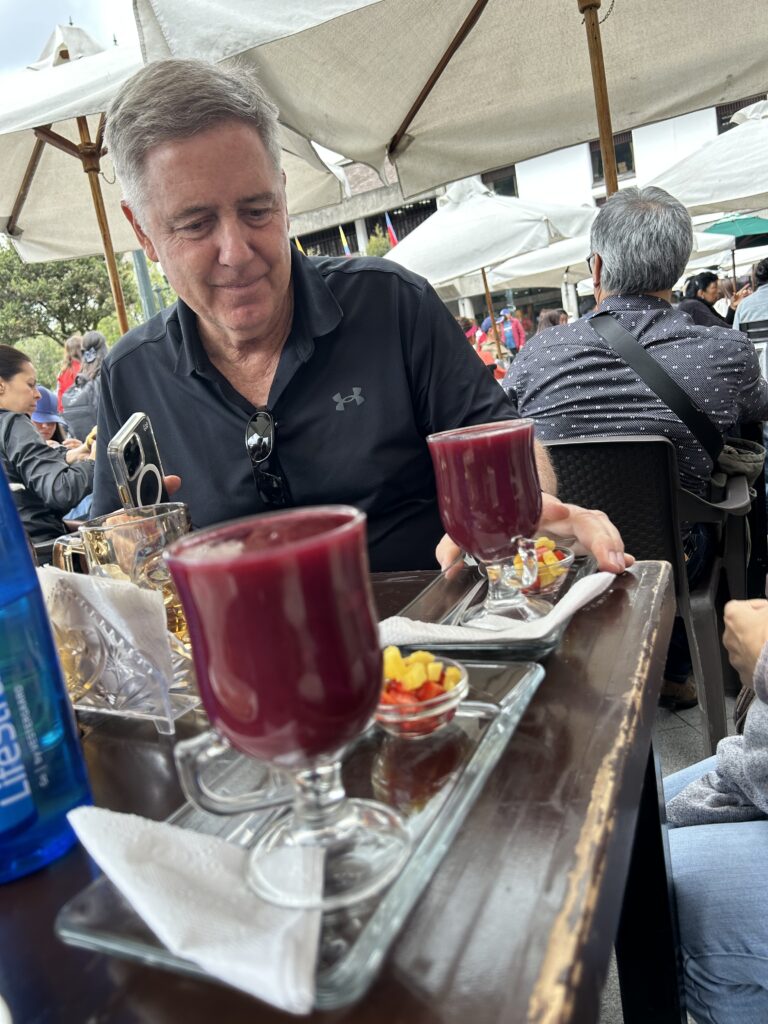
Last but not least, an impressive element of food in Ecuador is the lack of slash and burn in the jungle. Unlike some Brazilians and Panamanians, the Ecuadorians try to integrate their farming into the local ecology. Yes, areas are cleared for fields, but on a small scale. Where we saw agriculture, we did not see monoculture, but integrated farming that might include small plots of corn and bananas, for instance, in the same area. As their recent vote on keeping oil drilling out of the Amazon basin shows, the Ecuadorians are concerned about the environment and sustainability.
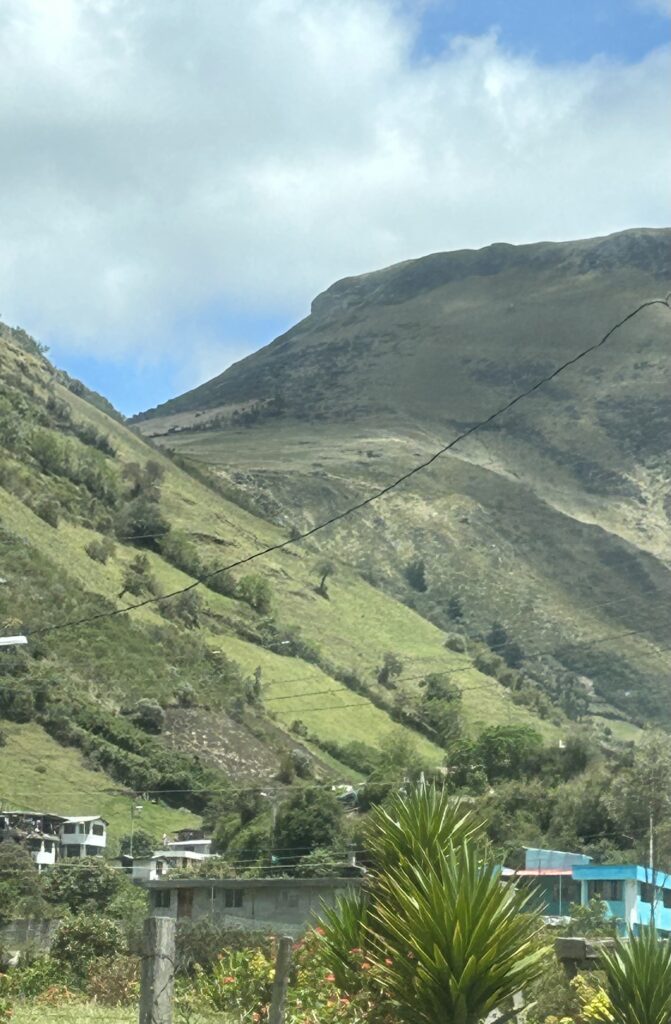
Food is essential to life, and exploring new foods is essential to exceptional travel. Ecuador offered excellent options at rather amazing prices. Now, sitting on my couch, wondering what I’m going to pull out of the refrigerator for lunch, my heart is longing for an Ecuadorian market, and my mouth is watering just thinking about it.
Now you made me hungry too😊. I agree with Heather the food was fabulous and delicious! Why travel all that way and not try the local delicacies?? It was fun to try the “worm”!